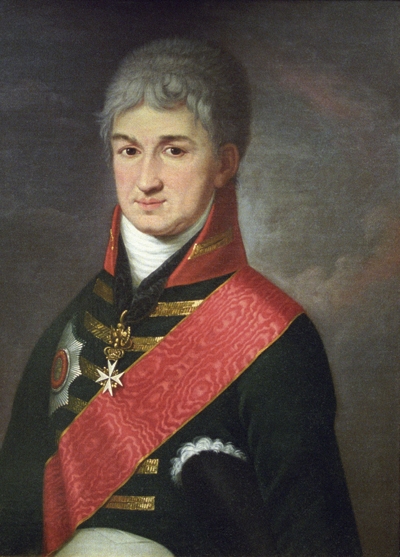So: Russia’s imperial possessions on the Pacific North West of America. Remember those? No. Me neither. Something vague about the Russians flogging a bit of Alaska to the United States in the middle of the 19th century perhaps. But until I’d read this book I didn’t know that at one point
Continental Russian America, not counting the Aleutian Islands, stretched 1,400 miles from its Eastern Tip (today called Cape Prince of Wales, by little Diomede Island in the Bering Strait) to its southwestern boundary near Sitka. If laid on top of the Continental United States, the territory — which closely corresponds to the modern state of Alaska — would stretch from California to Florida.
Nor did I know that serious and not wholly implausible plans were entertained of the Tsar ruling California and Hawaii from St Petersburg. The man who most entertained them — and who we meet in medias res in 1806 as a widower of 42 getting engaged to the daughter of the Spanish Governor of San Francisco — was Nikolai Rezanov. Once a court favourite — a consigliere to Catherine the Great’s arrogant young lover Zubov — he was now on his uppers: prickly about his status, on the other side of the world from St Petersburg, and carrying the stink of failure after having headed a mission to open Japan to Russian trade that could not have failed more dismally. This was a last roll of the dice.
Like most if not all imperial adventures, the civilising mission (ho ho) followed the money. Ever since the first Cossack pirate found a way through the Bering Strait, fur, or ‘soft gold’, was what they were all after. The discovery that in Chinese entrepot towns the pelt of a single sea-otter would fetch the equivalent of two years’ salary for an ordinary seaman was all anyone needed to know. Fur, tea and American manufactures were the basis of a Pacific triangle trade. The Brits took an interest, and so did the Spanish — who then held bits of the West Coast up to San Francisco.
Anyone with the faintest familiarity with Russian history will be used to the idea that whatever the rest of the world can show in endurance, suffering, bloodthirst or cruelty the Russians will generally trump it without turning a hair. (‘Only a Russian could write of Alaska,’ Matthews remarks drily, that it is ‘very seldom cold here’.) The story of Russia’s Wild East does nothing to change that view. And — as you might expect from an unimaginably enormous empire governed from a weird little pimple on its Western edge — 11 time zones and thousands of miles of frozen tundra east of head office, the local contractors tended to improvise a little when it came to ethics and deportment. The genius of the lawless Siberian fur trade, and our man’s first father-in-law, Grigory Shelikhov, was a murderous Del-Boy who nevertheless turned over three million roubles at a time when the entire Russian state budget was 40 million roubles.
Here are massacres, enslavements, embezzlements, rape and pillage. Not that the locals were much better. When Tlinglit tribesmen overran one Russian camp, ‘all of the 29 Russian and 55 Aleut men who had been in the camp at the time of the attack had been decapitated; their heads were stuck on sticks along the stony shore.’ In order that the Tlinglit retreat from another fortification should be noiseless, the dogs and children all had their throats cut.
There’s the drinking, obviously, too. Matthews remarks that Russia’s two great legacies to Alaska were Orthodox Christianity and alcoholism. The captain of one important ship, Rezanov reported back, ‘began a drinking bout which lasted three months steadily’ and which saw him drink 272 bottles of strong drink in 100 days. ‘This combination of Khostov’s heavy drinking and his command of the Juno’s artillery was unsettling for the men ashore,’ Matthews notes. (‘At night time there was shooting from cannons.’) Every evening Khostov ordered the anchor be raised — disaster being constantly averted because ‘luckily the sailors were always too drunk’ to carry out the order.
So this is a book that starts in pretty high gear. The human detail is compelling, the geopolitics well outlined, the brutality and folly — from this distance — tragicomic. At its centre Rezanov — enduring social ostracism ‘like a water-shy dog, with lowered head’; in happier mood, heading in search of ‘bold women and rabble’; or, with diplomatic imprudence, peeing off the side of his boat in full view of his fastidious Japanese hosts — is an engaging antihero.
Where it really hits its stride is with the story of Rezanov’s hopeless mission to Japan — which was, essentially, where his troubles began (after detaining him with great courtesy for months, the Japanese told him with equal courtesy to get stuffed). Tsar Alexander I, Matthews suspects quite knowingly, gave both Rezanov and the ship’s captain the impression that they were in sole command of the mission, and they spent the whole journey bickering viciously. The great thing, for our purposes, was that ‘almost every literate man on board wrote a diary’, and the one who really hated Rezanov made a specially lively job of it.
Some of this material is so good that Matthews seems at a loss to do anything but whack it down and presumably give thanks to whatever gods he prays to. A single page, in the account of Rezanov’s progress by sea from Cape Horn to Hawaii, gives us the ship crashing into a whale (‘the whale also came out of the encounter badly’), a parrot ‘found, squawking in distress, with its feet frozen to the ship’s rail’, two scientists getting into a screaming match because one ‘refused to share some drawings of unusual jellyfish he’d spent all night catching in a net made of silk stockings’, and a pet Brazilian monkey running amok in the Great Cabin, spilling ink on the maps and then — after biting its owner on the hand — being hit so hard ‘its injuries were deemed untreatable and it was thrown overboard’.
But this story is more than just an aggregate of quirky, funny details. Matthews has an excellent quick sense of the absurd, and his footnotes are great (I love a good footnote, me). But he also manages to spin his analysis into an aphoristic style that’s fresh and penetrating without seeming glib. ‘Russia may have been the largest empire in the world,’ he’ll declare, for example, ‘but St Petersburg was still a village with the Tsar as its squire.’
Creeping underneath the historical narrative, too, is a sort of covert travel book. Matthews has been to these places, and gets over a wonderful and personal sense of what Northern Mongolia (‘the land is so open that a day’s travel appears not to change one’s place in it at all, while underfoot an apparently infinite number of tiny gerbils scramble into their holes at the sound of a horse’s hoof, making the ground tremble and seethe at the periphery of one’s vision’), or Spruce Island (carpeted six feet deep with sound-deadening green moss), or Sitka (‘here the water is still, and it is the forests rather than the sea that pitch and hiss’) are like now, and might have been like then.
Really, this is a blindingly good story extremely well told. Go, read. It will make you laugh, stretch your eyes and give thanks that you don’t live in anything remotely resembling late 18th-century Siberia.







Comments